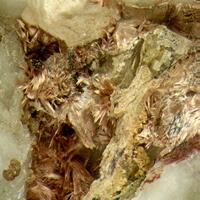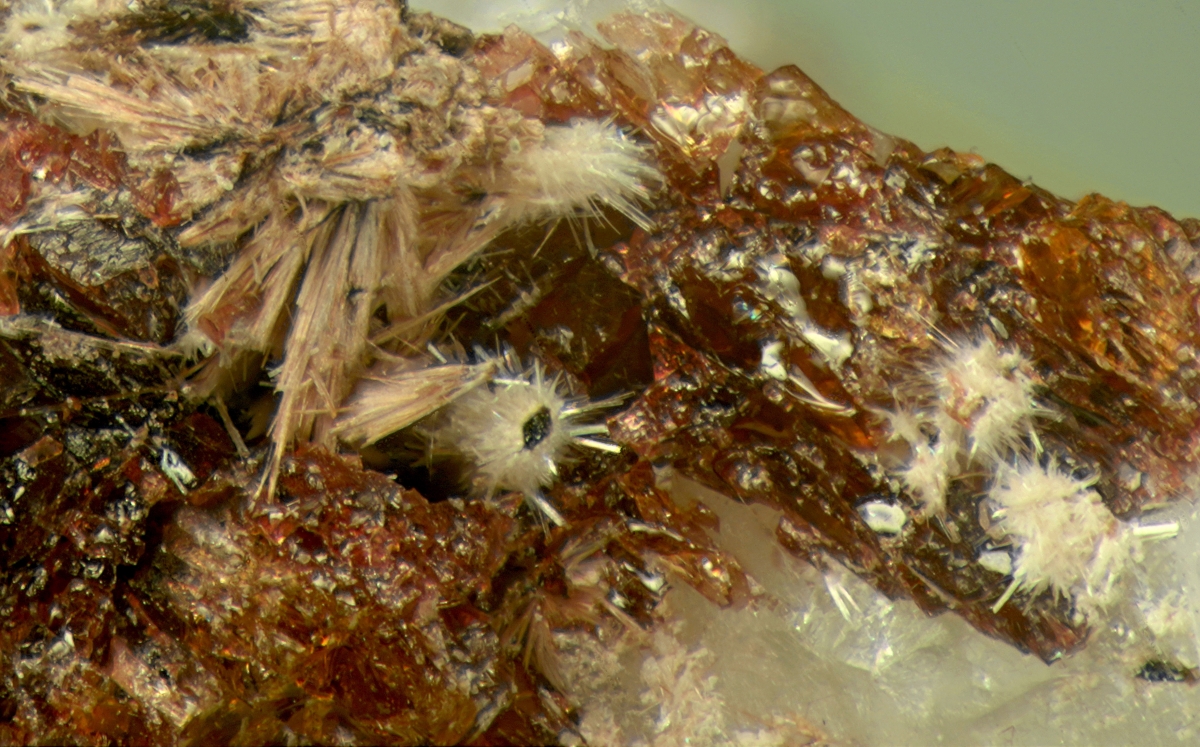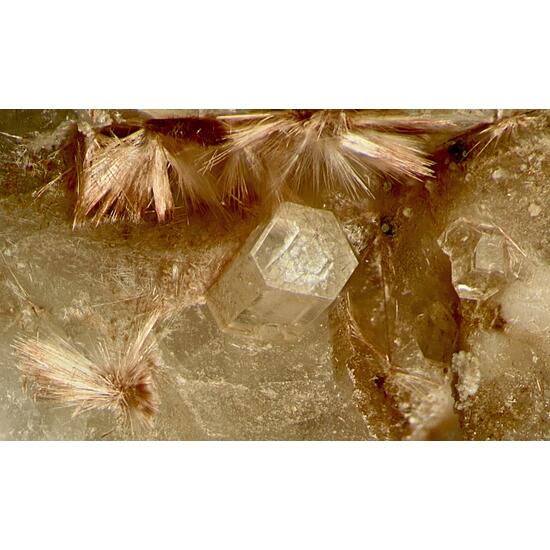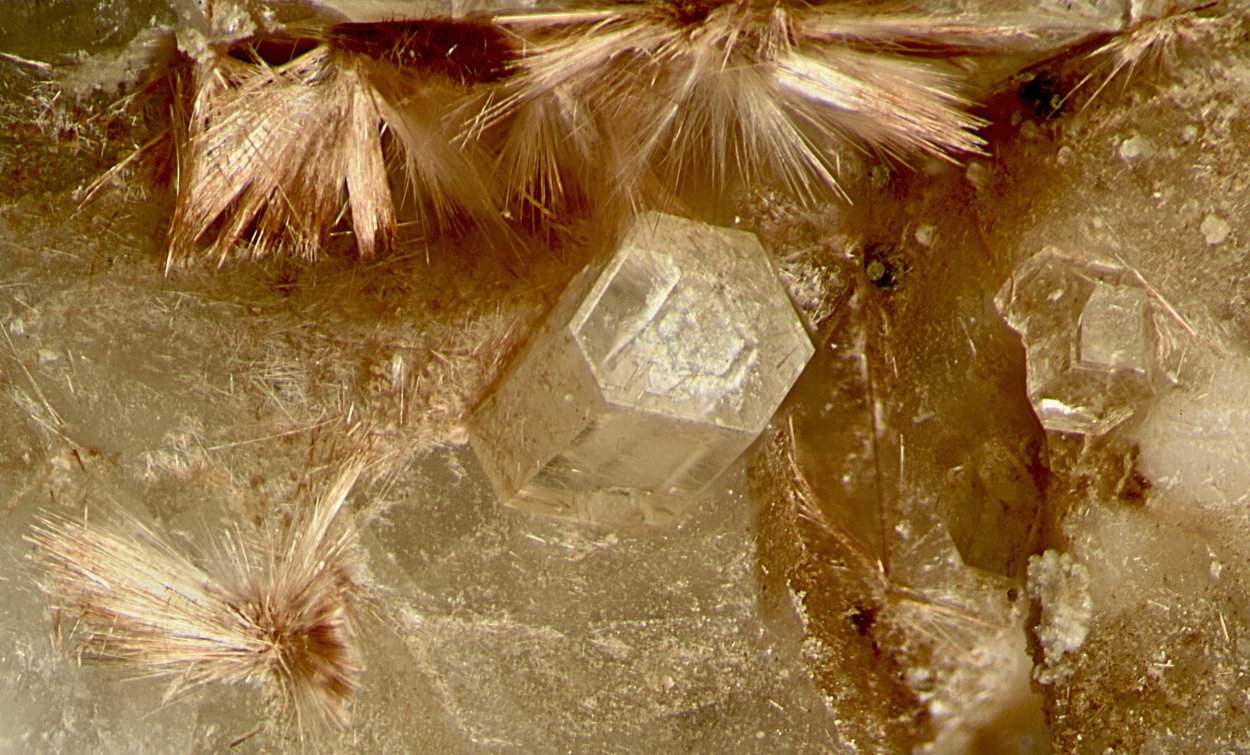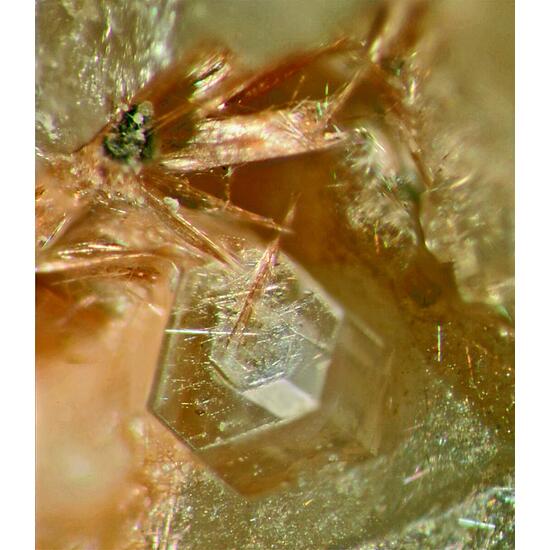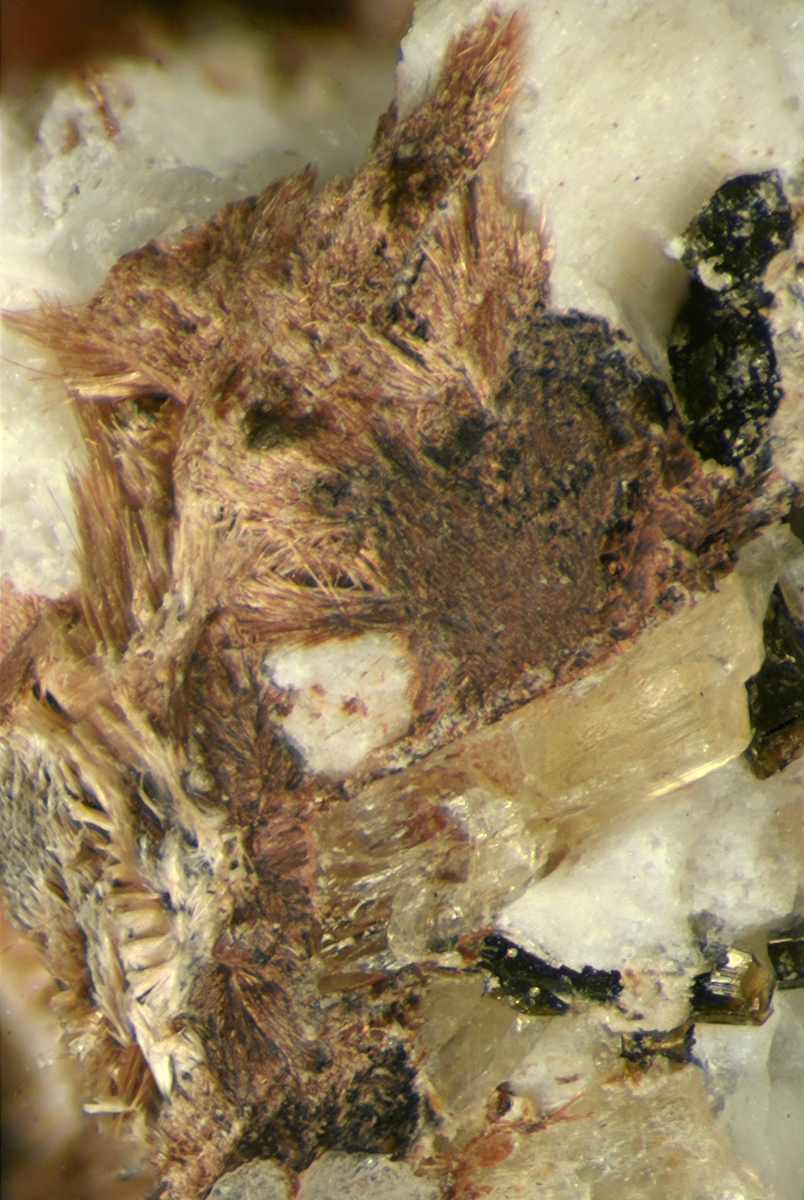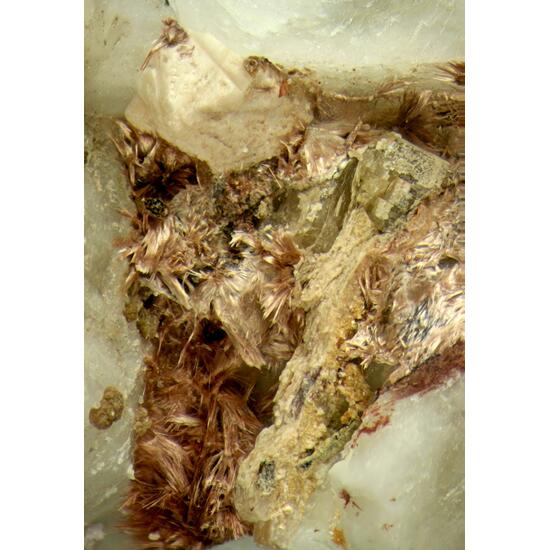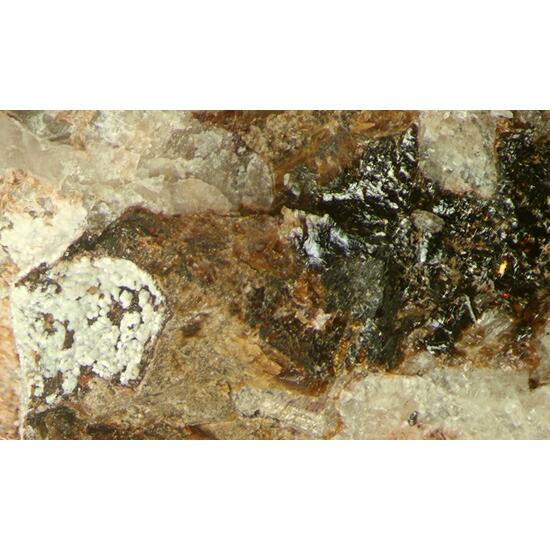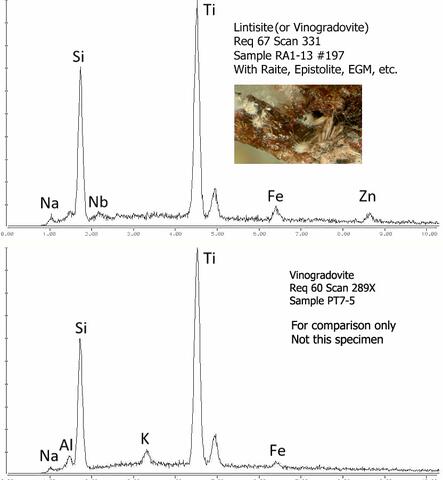This is a small, but remarkably complex, specimen from what may have been the best and richest find of raite ever made at MSH. In addition to the raite, of which there is plenty, the specimen has terskite, very unusual prismatic gmelinite-Na showing phantom growth, steenstrupine-(Ce), sérandite, and a eudialyte group mineral (possibly kentbrooksite). There are also two unidentified minerals (see below).
But for me, the most interesting things on the specimen are the small, but very well defined, sprays of (probable) lintisite. Unfortunately, I have to say “probable” because, at the qualitative EDS level (which is all that I can afford), lintisite and vinogradovite scans look very similar. The main difference is that, apart from the Li in lintisite (which EDS can’t detect), vinogradovite generally has some Al, whereas lintisite does not. (Lintisite also has more Na relative to Si and Ti, but Na is not readily detected via EDS and, moreover, has a tendency to “migrate” under the electron beam, so comparison of Na levels is fraught with even more difficulty than comparison of other peaks.) In the Analysis” tab, for this specimen (#331) “lintisite” it does not have significant Al, (And, presumably because of this, the Si peak for the vinogradovite is lower, relative to Ti, than it is for the “lintisite”.) Also – for what it is worth – the puny Na peak in the “lintisite” scan does look a bit more robust. However, Al isn’t an “essential” ion in the vinogradovite formula. In principle, it could be absent. Moreover, according to the MSH rarity tables that have been published in Min Rec, Lapis, and Revista Mineralogica, lintisite has only been found in the sodalite xenoliths at MSH. While the mineralogy of this find is very “sodalite xenolith like”, I’m not sure that this was a “true” sodalite xenolith. (Frankly, I am at a loss as to how to classify the environment. It doesn’t seem to fit any of the old environment categories.) Nonetheless, based on the appearance, associated minerals, and the presence of Al in the EDS scan, I think that “lintisite” is the most reasonable ID. Therefore I have given the “lintisite” pride of place in my parade of photos.
In the first photo (FOV 1.2 x 1.6 mm), the colorless/white lintisite blades (0.25 mm) sit on etched “eudialyte”. (According to EDS for a sample from another specimen. Kentbrooksite is a likely possibility. But EDS isn’t sufficient for a definitive ID – other than to say that it probably isn’t one of the more exotic EGM species.)
The next pair of photos (FOV 3.6 x 2.3 mm) is a broader view showing more of the lintisite as well as some of the raite. In this case, the raite is pinkish-tan and individual fibers are <= 1.0 mm long.
The next pair of photos (FOV 3.8 x 2.3 mm) shows more of the raite along with the best example of “phantom” gmelinite-Na. The gmelinite-Na from this find was thoroughly verified at the CMN. In this case, the raite looks a lot like yofortierite, but according to my contact at the ROM, it is all raite. There was no yofortierite in this find.
The next photo (FOV 1.8 x 2.1) is a close-up of the phantom gmelinite. It is 0.45 mm wide.
The next photo (FOV 2.3 x 3.5 mm) shows more of the raite, along with some yellow sérandite which EDS showed to be high in Ca. In nthis case paler raite fibers appear to be nucleated on a dark purple, very dense mass of fibers that EDS showed was also raite (scan #333). The raite from this find has a somewhat variable chemistry, but it (and pretty much everything) else is always enriched in Zn. (One of the associated minerals in this find was willemite, but there isn’t any on this specimen.)
The next photo (FOV 4.4 x 6.3 mm) shows more raite along with the best example of terskite on the specimen. The terskite is the whitish crystal (2.2 mm) at top (possibly a pseudomorph.) The terskite was verified via qualitative EDS on another specimen (scan #132). Note: Both terskite and the new species hydroterskite have been reported from MSH. It is not possible to distinguish them via EDS, so strictly speaking this is “whatever it is that you call something that is either terskite or hydroterskite” – apparently there is no “terskite group”!
The next photo (FOV 6.5 x 3.9 mm) shows some of the pitch-black steenstrupine-(Ce) as well as both of the UK minerals. The EDS scan for the brown stuff to the left of the steenstrupine could not be interpreted as a single mineral (or any obvious combination of minerals). Possibly it is an alteration of the steenstrupine. The whitish pearly flakes to the left of that do look like a mineral, but the EDS scan (#332), while bearing some similarity to thornasite, could not be identified with any known mineral. A close up of these pearly flakes is shown in the next photo (FOV 2.4 x 3.7 mm). The individual flakes are ca 0.1 mm in diameter.
I did not have room for a full-view photo, but hand-held, the specimen isn’t much to look at anyway. It is just a large, very complicated, micro.
Single item shipping weight (no case) is 3.0 oz (84 g). For shipments outside the USA, up to a total weight < 8 oz (225g), this can be combined with items from this or other auctions for the same postage.
Within the USA, postage for total weights up to 13 oz ranges from $4.25 to $6.50 (including packing etc) regardless of destination. Above 13 oz, I will use “own box” Priority Mail. The rate, including packing, varies by destination from $7.25 to $9.50.









